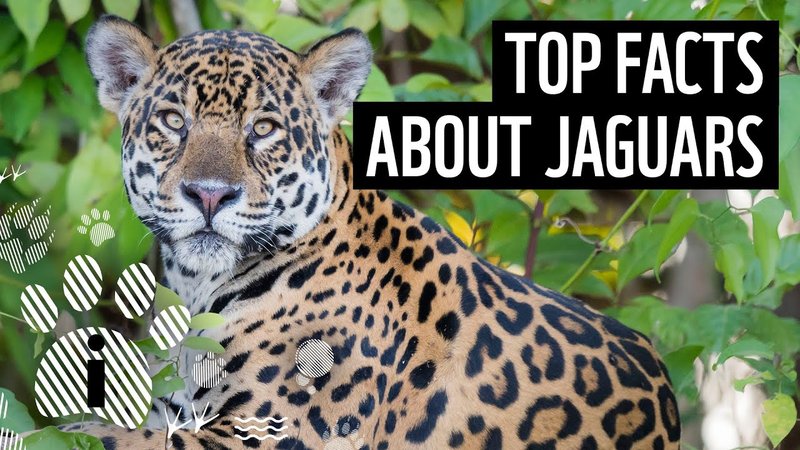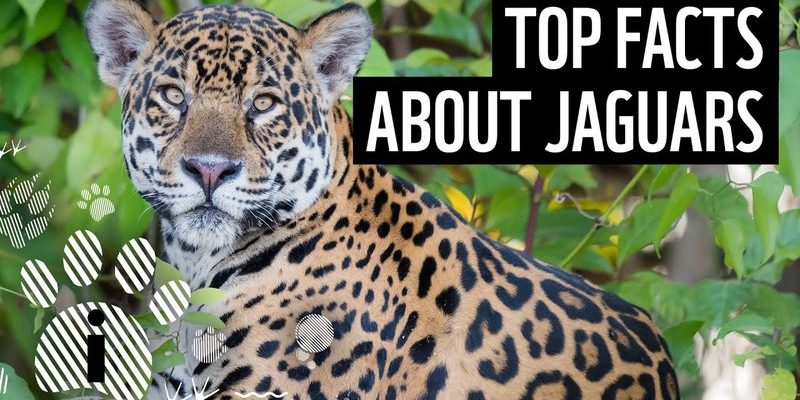
When we think about jaguars, we might picture their striking coat patterned with rosettes, but there’s so much more below the surface. From their hunting techniques to their conservation status, it’s easy to see why these big cats have mesmerized humans for centuries. So, if you’re ready to dive into the captivating world of jaguars, grab a cup of coffee, and let’s explore ten fascinating facts that will expand your understanding of this remarkable animal.
1. The Largest Cats in the Americas
Jaguars hold the title of the largest cats on the American continent. Weighing between 100 to 250 pounds, these big cats can grow up to 6 feet long, not including their tails! To put that into perspective, a jaguar can weigh as much as a small adult human. Their muscular build and powerful jaws make them top predators in their habitats, able to take down prey much larger than themselves.
What’s even more impressive is their strength. Jaguars have the most powerful bite of all big cats, allowing them to crack open turtle shells and penetrate the skulls of their prey with ease. This impressive trait sets them apart in the animal kingdom and helps them thrive in diverse environments, from rainforests to grasslands.
2. Expert Swimmers
Here’s the thing: jaguars are not just skilled hunters on land; they’re also exceptional swimmers. Unlike many cats that avoid water, jaguars embrace it. They can be found prowling in rivers and lakes, where they hunt fish, caimans, and even other mammals. Their broad, muscular bodies make swimming seem effortless, and they can dive underwater to catch their prey.
You might be wondering what drives them to the water. Well, given their natural habitats often include rivers and wetlands, their swimming ability is a crucial survival skill. It’s fascinating to think of these majestic animals not only stalking through the jungle but also paddling through the water like a pro.
3. Unique Coat Patterns
Jaguars are instantly recognizable by their stunning coats, covered with distinctive rosettes and spots. Each jaguar has a unique coat pattern, making them as identifiable as a human fingerprint. The rosettes are designed by nature to help them blend into their surroundings, providing excellent camouflage in the dappled light of the forest.
Interestingly, the pattern of a jaguar’s coat also serves a purpose beyond aesthetics. The spots help break up their outline, making it harder for prey to spot them as they stalk through the foliage. Honestly, these adaptations are a beautiful example of nature’s ingenuity at work.
4. A Powerful Presence in Mythology
Throughout history, jaguars have held a significant place in various cultures and mythologies, especially in Central and South America. Many indigenous peoples view them as symbols of strength and power. In fact, the jaguar is often associated with the underworld, known as the “Protector of the Dead,” in some ancient cultures.
Their mysterious demeanor and striking appearance have inspired stories, art, and rituals. For instance, the ancient Maya revered jaguars, featuring them prominently in their mythology and art. You can see their influence in the many carvings and paintings that depict jaguars as powerful spiritual beings.
5. Diet and Hunting Techniques
Jaguars are carnivorous and primarily hunt at night. Their diet mainly consists of large animals like deer, capybaras, and even caimans. But here’s the kicker: jaguars often use a unique hunting technique that sets them apart from other big cats. Instead of stalking and pouncing like lions or tigers, jaguars prefer to ambush their prey from a concealed position.
Once they have spotted their meal, they will leap from their hiding place and deliver a swift, fatal bite. This hunting style, combined with their strong jaws, makes them highly effective predators. Their prowess in the wild is a testament to their adaptability and skill as hunters.
6. Habitat and Range
Jaguars are found primarily in Central and South America, inhabiting a range of environments, including rainforests, scrublands, and grasslands. They thrive in areas with dense cover, which allows them to hunt effectively. Unfortunately, their habitat is rapidly declining due to deforestation and human activities.
Currently, the largest jaguar populations can be found in the Amazon rainforest. However, their range once extended into the southern United States. Conservation efforts are crucial to ensure that these magnificent creatures don’t become endangered or extinct.
7. Solitary Creatures
Unlike lions, which live in groups called prides, jaguars prefer a solitary lifestyle. These big cats are territorial and establish ranges that they defend from other jaguars. Their independence extends to their hunting behavior as well; they are skilled hunters who rely on their instincts and abilities rather than teamwork.
This solitary nature can make observing them in the wild quite challenging. They often prefer to avoid human contact, which is another factor that makes conservation efforts more complex. Nevertheless, their solitude adds an air of mystery to these already captivating creatures.
8. Conservation Status
Jaguars face numerous threats due to habitat loss, poaching, and conflicts with humans. They are currently listed as near threatened by the International Union for Conservation of Nature (IUCN). Protecting their habitats and ensuring their survival is vital for maintaining biodiversity in their ecosystems.
Conservation programs range from habitat protection to community outreach efforts aimed at reducing human-animal conflict. You might find this hopeful: organizations are working tirelessly to create wildlife corridors that allow jaguars to roam safely and connect with other populations.
9. Communication and Social Behavior
You might be surprised to learn that jaguars have a variety of vocalizations and body language to communicate. From growls to meows, they use different sounds to express themselves, especially during mating season. Their markings, like scratches on trees, also serve as a form of communication, signaling their presence to others.
Despite being solitary, jaguars do interact during mating season and when mothers are raising their cubs. A mother will carefully teach her cubs how to hunt and survive in the wild. This nurturing aspect highlights the importance of familial bonds in the jaguar’s life.
10. They’re Key Players in Their Ecosystem
Jaguars play a crucial role in maintaining the health of their ecosystems. As apex predators, they help control the populations of herbivores such as deer and capybaras. By keeping these populations in check, jaguars help preserve the balance of the ecosystem, ensuring that vegetation can thrive.
Without predators like jaguars, ecosystems can become unbalanced, leading to overgrazing and habitat degradation. So, protecting jaguars isn’t just about saving a beautiful creature; it’s also about preserving the entire ecosystem that depends on their existence.
In conclusion, jaguars are remarkable animals that embody strength, beauty, and the intricate balance of nature. As we continue to learn about these magnificent cats, it’s crucial that we also take steps to protect their natural habitats. By doing so, we ensure that future generations can experience the wonder of jaguars in the wild. Remember, every little bit counts when it comes to conservation, and being aware of the fascinating facts about jaguars is a great start!

